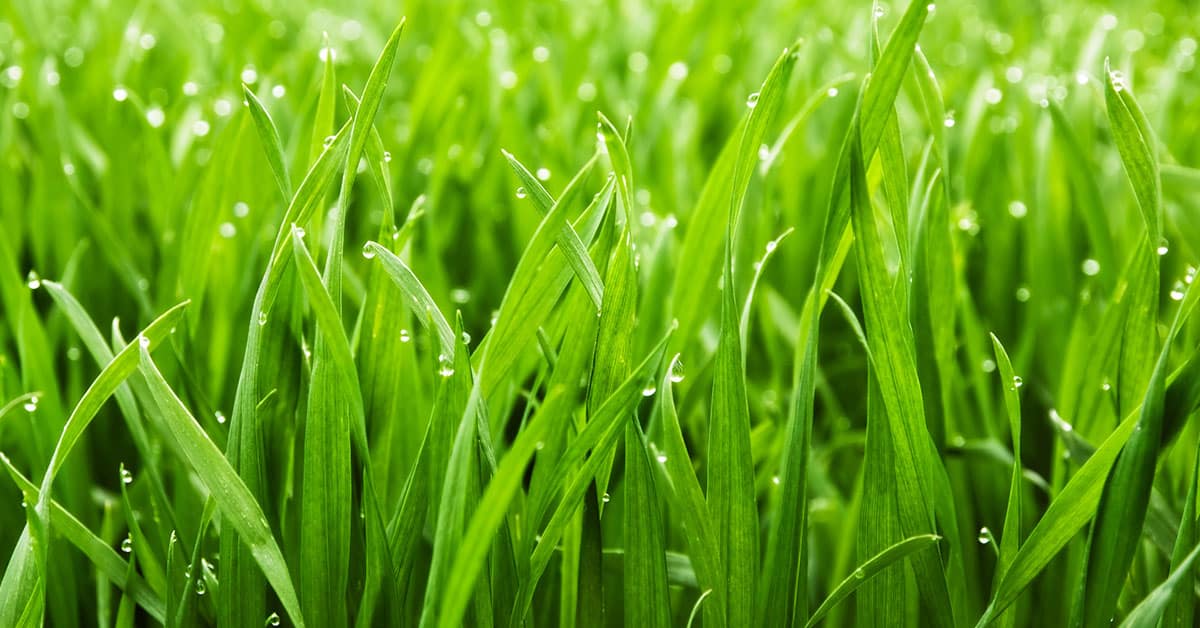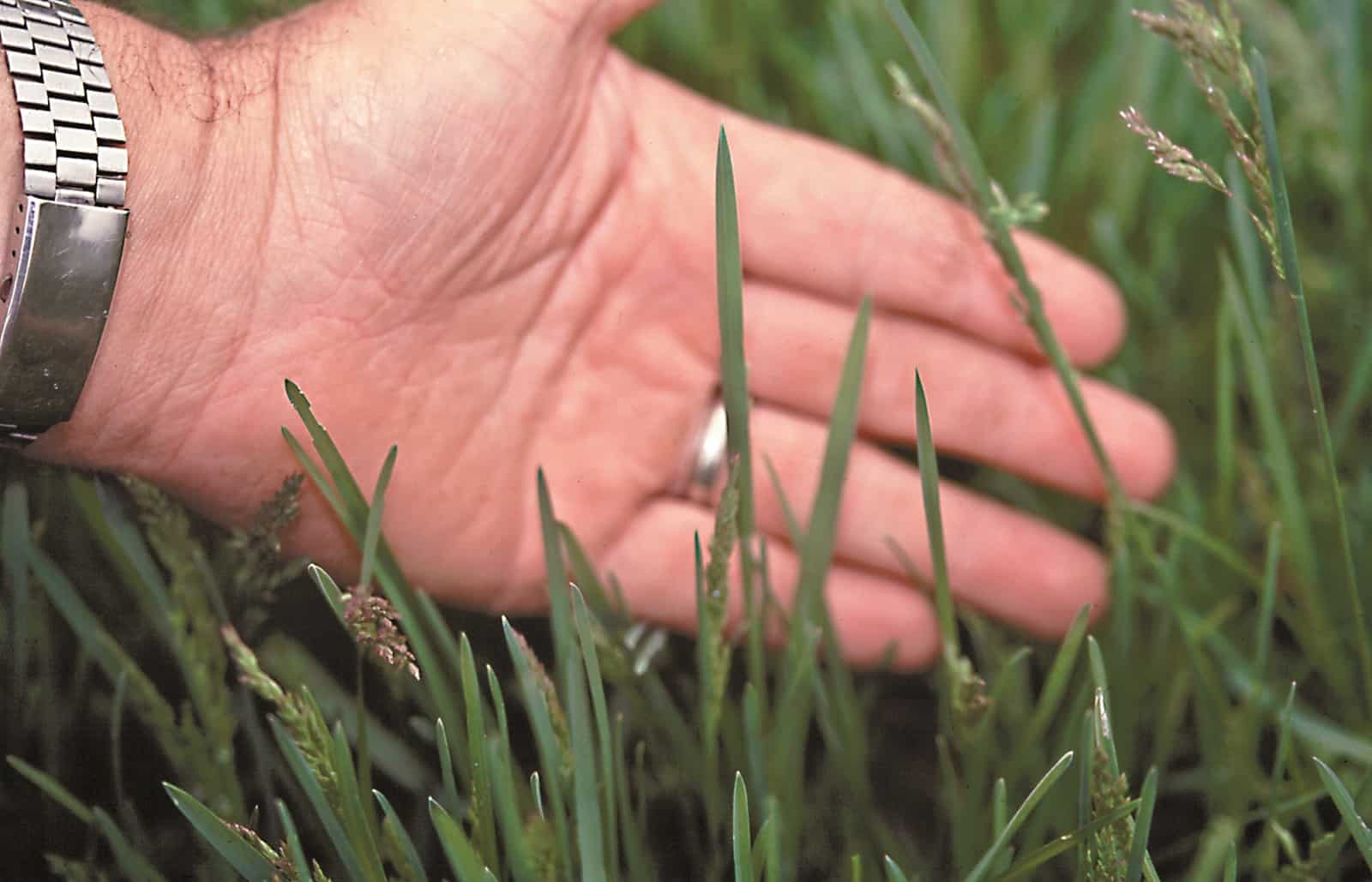Home>Gardening & Outdoor>Landscaping Ideas>What Does Tall Fescue Grass Look Like


Landscaping Ideas
What Does Tall Fescue Grass Look Like
Modified: March 27, 2024
Discover the appearance of tall fescue grass and its landscaping ideas. Learn how to identify and utilize this versatile grass for your lawn.
(Many of the links in this article redirect to a specific reviewed product. Your purchase of these products through affiliate links helps to generate commission for Storables.com, at no extra cost. Learn more)
Introduction
When it comes to creating a lush and vibrant lawn, choosing the right type of grass is crucial. Among the various options available, tall fescue grass stands out as a popular choice for homeowners and landscapers alike. Its resilient nature, adaptability, and aesthetic appeal make it a top contender for lawns in many regions. In this article, we will delve into the characteristics, identification, uses, and maintenance of tall fescue grass, providing a comprehensive guide to help you understand and appreciate this versatile grass variety. Whether you are a seasoned gardener or a novice enthusiast, exploring the world of tall fescue grass can offer valuable insights into enhancing the beauty and functionality of your outdoor space. So, let's embark on a journey to discover what makes tall fescue grass a favored option for lawns across the globe.
Key Takeaways:
- Tall fescue grass is a resilient and low-maintenance option for creating lush lawns, with features like drought tolerance, adaptability to various soils, and a soft, luxurious texture.
- Identifying tall fescue grass is essential for successful lawn care, as its vibrant green color, clumping growth habit, and robust root system set it apart from other grass species.
Read more: What Does Grass Hay Look Like
Characteristics of Tall Fescue Grass
Tall fescue grass, scientifically known as Festuca arundinacea, possesses a unique set of characteristics that sets it apart from other grass species. Understanding these traits is essential for making informed decisions about lawn care and landscaping. Here are some key characteristics of tall fescue grass:
- Drought Tolerance: Tall fescue grass exhibits impressive drought tolerance, making it an excellent choice for regions with limited water availability. Its deep root system allows it to withstand dry conditions, retaining its verdant hue even during periods of water scarcity.
- Adaptability: This grass variety demonstrates remarkable adaptability to a wide range of soil types, including clay and sandy soils. Its versatility enables it to thrive in diverse environmental conditions, from temperate to transitional climates.
- Density and Texture: Tall fescue grass forms dense, lush tufts with a fine texture, creating a visually appealing and soft carpet-like surface. This characteristic contributes to its popularity as a lawn grass, providing a luxurious feel underfoot.
- Shade Tolerance: Unlike many other grass species, tall fescue exhibits a high tolerance for shaded areas. It can thrive in partially shaded environments, making it an ideal choice for lawns with trees or structures that cast shadows.
- Disease Resistance: Tall fescue grass possesses natural resistance to various diseases, reducing the need for extensive chemical treatments and enhancing its overall sustainability.
- Low Maintenance: With its minimal maintenance requirements, tall fescue grass offers convenience to homeowners and landscapers. It requires less mowing and fertilization compared to some other grass types, allowing for a more manageable lawn care routine.
These characteristics collectively contribute to the allure of tall fescue grass as a desirable option for creating vibrant and resilient lawns. Its ability to thrive in challenging conditions while maintaining aesthetic appeal makes it a valuable asset for landscaping projects and sustainable outdoor spaces.
Identifying Tall Fescue Grass
Recognizing tall fescue grass amidst a variety of turfgrasses is essential for cultivating and maintaining a healthy lawn. Several distinguishing features can aid in the accurate identification of tall fescue grass:
- Leaf Blades: The leaf blades of tall fescue grass are long, narrow, and rich green in color. They feature a prominent veining pattern, adding to the grass’s visual appeal and aiding in its identification.
- Growth Habit: Tall fescue grass typically forms clumps rather than spreading by rhizomes or stolons. This growth habit results in distinct tufts of grass, contributing to its characteristic appearance.
- Seed Head: During the flowering stage, tall fescue grass produces seed heads that are compact, erect, and often have a bristly or spiky appearance. These seed heads can aid in differentiating tall fescue from other grass species.
- Root System: The root system of tall fescue grass is robust and deeply penetrating, enabling it to access water and nutrients from lower soil layers. This feature contributes to its drought tolerance and overall resilience.
- Texture: When touched, tall fescue grass exhibits a fine and soft texture, providing a pleasant sensation underfoot. Its luxurious feel sets it apart from coarser grass varieties.
- Color and Density: Tall fescue grass boasts a vibrant green color and forms dense, lush tufts, creating a visually striking and inviting appearance in lawns and landscapes.
By familiarizing oneself with these identifying characteristics, homeowners and landscapers can confidently select, cultivate, and maintain tall fescue grass in their outdoor spaces. Whether establishing a new lawn or identifying existing grass species, understanding the unique traits of tall fescue grass is instrumental in achieving landscaping success.
Tall fescue grass has a coarse texture and grows in bunches. It has deep green color and can grow up to 3 feet tall. Look for wide blades with a prominent midrib.
Uses of Tall Fescue Grass
Tall fescue grass serves a multitude of purposes in landscaping and outdoor design, offering diverse applications that cater to both practical and aesthetic needs. Its versatility and resilience make it a valuable asset in various settings. Here are some key uses of tall fescue grass:
- Lawn Establishment: Tall fescue grass is widely utilized for establishing lush, resilient lawns in residential, commercial, and recreational spaces. Its dense growth habit and vibrant green color contribute to the creation of visually appealing and functional outdoor areas.
- Erosion Control: Due to its robust root system and ability to form dense tufts, tall fescue grass is employed for erosion control on slopes, embankments, and areas prone to soil displacement. Its stabilizing effect helps prevent soil erosion and promotes landscape conservation.
- Recreational Spaces: Parks, playgrounds, and sports fields often benefit from the inclusion of tall fescue grass. Its tolerance to foot traffic and ability to withstand moderate wear make it an ideal choice for creating recreational landscapes that can endure frequent use.
- Utility Landscaping: Tall fescue grass is utilized in utility landscaping, such as roadside embankments and median strips, where its adaptability to varying soil conditions and minimal maintenance requirements are advantageous.
- Wildlife Habitats: In natural and conservation areas, tall fescue grass contributes to the creation of wildlife habitats. Its dense growth provides cover and foraging opportunities for various small animals and birds, enhancing biodiversity in outdoor environments.
- Green Infrastructure: Tall fescue grass is integrated into green infrastructure projects, including rain gardens and sustainable urban drainage systems. Its ability to absorb and filter water, coupled with its aesthetic appeal, makes it an asset in eco-friendly landscape designs.
By encompassing such a wide range of uses, tall fescue grass proves to be a versatile and valuable component in landscaping and environmental planning. Its ability to fulfill practical, aesthetic, and ecological functions underscores its significance in creating sustainable and visually captivating outdoor spaces.
Maintenance and Care of Tall Fescue Grass
Effectively maintaining and caring for tall fescue grass is essential for nurturing a thriving and resilient lawn. By adhering to proper maintenance practices, homeowners and landscapers can ensure the longevity and visual appeal of their outdoor spaces. Here are key considerations for the maintenance and care of tall fescue grass:
- Watering: While tall fescue grass exhibits drought tolerance, consistent watering is crucial, especially during dry spells. Deep, infrequent watering is recommended to encourage the development of deep roots and enhance the grass’s resilience.
- Mowing: Regular mowing helps maintain the optimal height for tall fescue grass, which is typically around 2.5 to 3.5 inches. Mowing frequency can vary based on the season and growth rate, with the general guideline of removing no more than one-third of the grass blade length at each mowing session.
- Fertilization: Applying a balanced fertilizer in the fall and spring supports the growth and health of tall fescue grass. It is important to follow recommended fertilization schedules and use appropriate products to avoid over-fertilization and potential harm to the grass.
- Aeration: Periodic aeration of the soil helps alleviate compaction and promotes optimal air, water, and nutrient penetration to the grass roots. This practice is beneficial for enhancing the overall vigor and resilience of tall fescue lawns.
- Weed Control: Implementing an effective weed control strategy is essential for preserving the integrity of tall fescue grass. Targeted weed management, including pre-emergent and post-emergent treatments, helps prevent weed encroachment and maintains the uniformity of the lawn.
- Overseeding: Over time, thinning areas in a tall fescue lawn can benefit from overseeding to promote density and uniformity. Selecting high-quality grass seed and following proper overseeding practices can rejuvenate the lawn’s appearance and resilience.
- Seasonal Considerations: Adapting maintenance practices to seasonal changes, such as adjusting watering schedules, mowing heights, and fertilization regimens, is essential for optimizing the health and appearance of tall fescue grass throughout the year.
By prioritizing these maintenance and care practices, homeowners and landscapers can cultivate vibrant, enduring, and visually appealing tall fescue lawns. Consistent attention to watering, mowing, fertilization, and proactive measures such as aeration and overseeding contributes to the overall health and sustainability of the grass, ensuring a picturesque and resilient outdoor environment.
Read more: What Does Johnson Grass Look Like
Conclusion
As we conclude our exploration of tall fescue grass, it becomes evident that this resilient and versatile grass variety holds immense value in the realm of landscaping and outdoor design. Its unique characteristics, including drought tolerance, adaptability, and low maintenance requirements, position it as a favored choice for creating vibrant and enduring lawns in diverse environments.
By understanding the identifying features of tall fescue grass and recognizing its diverse applications, homeowners and landscapers can harness its potential to transform outdoor spaces into visually captivating, functional, and sustainable landscapes. Whether utilized for erosion control, recreational areas, or utility landscaping, tall fescue grass proves to be an invaluable asset in enhancing the aesthetic appeal and ecological resilience of outdoor environments.
Furthermore, the maintenance and care considerations outlined in this guide underscore the importance of implementing proper lawn care practices to nurture healthy and thriving tall fescue lawns. From watering and mowing to fertilization and weed control, conscientious maintenance efforts contribute to the longevity and visual allure of tall fescue grass landscapes.
Ultimately, the enduring allure and resilience of tall fescue grass make it a compelling choice for individuals seeking to cultivate captivating, sustainable, and functional outdoor spaces. Its ability to thrive in challenging conditions, provide aesthetic appeal, and contribute to ecological balance solidifies its position as a cornerstone of modern landscaping practices.
Embracing the potential of tall fescue grass opens doors to creating outdoor environments that seamlessly blend beauty, functionality, and environmental stewardship, enriching the lives of those who interact with these vibrant landscapes.
Frequently Asked Questions about What Does Tall Fescue Grass Look Like
Was this page helpful?
At Storables.com, we guarantee accurate and reliable information. Our content, validated by Expert Board Contributors, is crafted following stringent Editorial Policies. We're committed to providing you with well-researched, expert-backed insights for all your informational needs.















0 thoughts on “What Does Tall Fescue Grass Look Like”